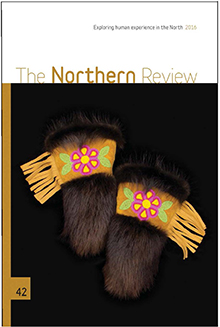Public Engagement and the Nunavut Roundtable for Poverty Reduction: Attempting to Understand Nunavut’s Poverty Reduction Strategy
DOI:
https://doi.org/10.22584/nr42.2016.005Keywords:
Nunavut, Makimaniq Plan, poverty reduction policy, Nunavut Roundtable for Poverty Reduction, participatory policy development, Inuit, settler colonialism, healing, collaborationAbstract
The Northern Review 42 (2016): 69–96
The 2009 Government of Nunavut Report Card, a review of the first ten years of Nunavut’s existence, recommended the development of an anti-poverty strategy to help address severe social inequality in the territory. Between October 2010 and November 2011, the Government of Nunavut (GN), jointly with Nunavut Tunngavik Incorporated (NTI), oversaw an extensive poverty-reduction public engagement process that resulted in the creation of the Nunavut Roundtable for Poverty Reduction and the territory’s poverty reduction strategy. The strategy suggests that the tension that exists between Inuit forms of governance and the model of public governance used today is the root cause of poverty. However, it does not offer an official definition of the term. Knowing the way in which poverty is perceived in Nunavut is key to understanding the direction of the territory’s poverty reduction strategy. Drawing upon interviews conducted in Iqaluit and in Ottawa in 2015, as well as on records from the Nunavut Anti-Poverty Secretariat, this article examines how the territory’s poverty reduction strategy was developed. It argues that the roundtable’s participatory methods, closely aligned with principles of the Nunavut Land Claims Agreement, have fostered a politicized discussion about poverty that has resulted in Nunavut’s poverty reduction strategy’s focus on collaboration and healing.
Downloads
Published
Issue
Section
License
Authors who publish with this journal agree to the following terms:
a. Authors retain copyright and grant the journal right of first publication, with the work simultaneously licensed under a Creative Commons License that allows others to share the work with an acknowledgement of the work's authorship and initial publication in this journal.
b. Authors are able to enter into separate, additional contractual arrangements for the non-exclusive distribution of the journal's published version of the work (e.g., post it to an institutional repository or publish it in a book), with an acknowledgement of its initial publication in this journal.
c. The journal has the right to authorize third-party publishers & aggregators to include the Article in databases or other services (EBSCO, Proquest).
d. The journal has the right to share the Article on the Internet, through social media and other means.


